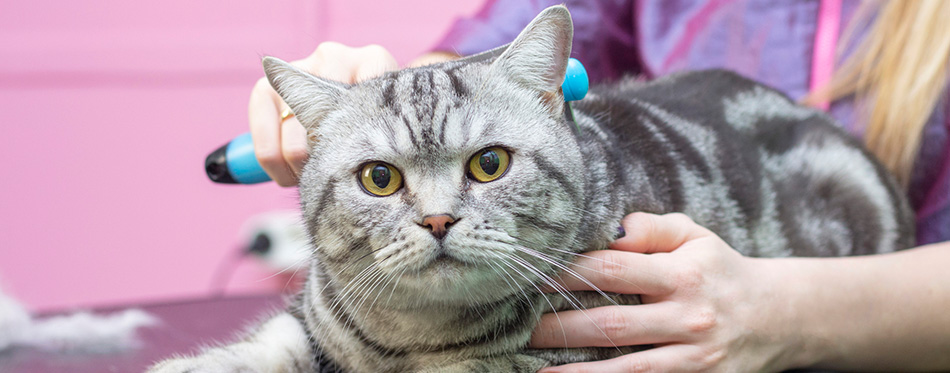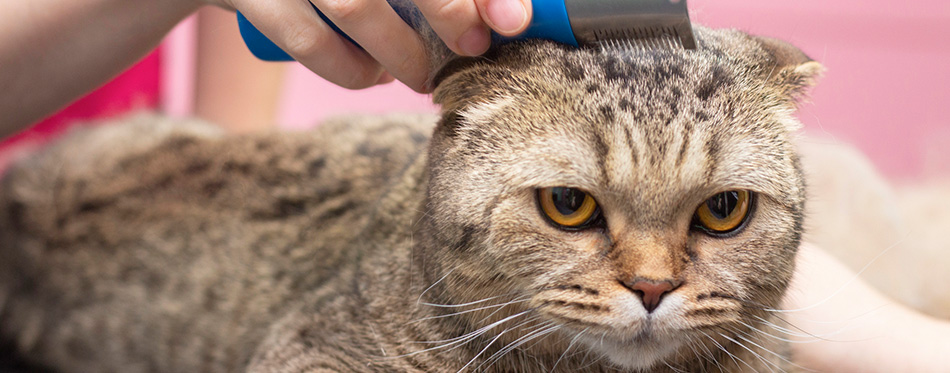Does your cat’s fur sometimes get matted? This is a very common situation especially if your kitty has extremely long hair that needs constant grooming. Getting your furry companion shaved will be a good option which might require the help of professional groomers. However, it is possible to effectively shave your kitty at home. Continue reading to find if you can shave your cat and the best way to do it.
The Function of a Cat’s Fur
A feline’s fur has several functions, not only does it keep your kitty warm, it protects them from incurring injuries. It is also a means of communication for the feline population as they can send signals when they are angry by raising their hackles. What’s more, their glorious fur keeps them constantly dry by repelling water and also functions to provide sensory input. Even during hot weather, the kitty’s fur keeps it cool with the thin layer of air always trapped within its furs which works as a buffer against excess heat. The fur also prevents sunburn in cats, which is capable of causing cancer. In fact, the functions of a kitty’s fur are so numerous that if it is ever shaved for some medical reasons, you might need to get some feline apparel for temporary protection.

How the Weather Affects Cats
When the weather is cold, your kitty may be exposed to either hypothermia or frostbite. Hypothermia is a condition associated with low temperature, meaning that the body temperature often falls below the normal level. This is always the case when the cat has long exposure to cold, especially at a time when they are already ill or are experiencing poor circulation. Mild cases come with lethargy, depression, and weakness. But severe cases come with stiffened muscles, low response to stimuli, and reduced rate of breathing and heartbeat. In that case, you will need to warm your cat up and take it to the vet.
Additionally, cats that are trapped outside during cold weather, or get lost in a snowstorm are likely to experience frostbite. This condition calls for immediate veterinary attention, in the absence of a vet, use warm water to immerse the affected area. Or you can use warm moist towels which should be changed intermittently. Dry the affected area gently and cover lightly with a dry, clean and non-adhering bandage, once the tissue is flushed. If untreated, frostbite can give rise to gangrene which may come with infections.
Why Shave Your Cat
Sometimes, it becomes a necessity to shave your kitty’s fur, especially those experiencing skin diseases or wounds, as it makes the application of medication more effective. After a shave, you will be able to know the affected areas, and proceed to keep then clean as well as treat them in order to prevent infections. Besides, before cats go in for surgery, certain parts of their fur will need to be shaved off.
When it comes to self-grooming, cats come across as fastidious and will make sure to keep their fur clean at all times. With the assistance of constant grooming from the pet parent, shed hairs will be removed, and in the process, you will stop uncomfortable hair mats from forming. Important to note that there are kitties which are averse to self-grooming, while some will never tolerate grooming. If you can’t manage the shaving on your own, employ the services of professional cat groomers.
It might not be wise to shave your cat on hot summer days because of the excess heat. An indoor cat might be able to find a cooler spot to hide from the direct rays of the sun, but the reverse is the case with an outdoor cat that will be completely exposed to the sun rays. Besides, when you shave your kitty on hot days, the chances of overheating becomes high with direct exposure to heat. The symptoms of overheating can come in the form of drooling, vomiting as well as panting.
Steps to Shave a Cat Correctly
Gather the necessary supplies
You need to get your supplies ready; you will need rubber gloves to protect your hands from scratching, treats to pacify the cat, towels, the right clippers and blades. However, you should make sure that the tools you use are the ones designed for smaller animals. A razorblade is not recommended.
Find a helping hand
It is rather difficult to singlehandedly shave a cat, which calls for a helper who will assist in holding your kitty in position. However, whoever you choose has to be a person the cat is already familiar with like a spouse, neighbor, or child. The cat is likely to feel safer with a familiar face.
Try to ensure that the kitty associates shaving with goodies like treats and petting, go ahead to show it all the tools you want to use and then reward with praises, delicious treat, and petting. Before you commence, your helper should do his own part by petting the cat in order to achieve some level of calmness. The sound of the cat purring signifies that it is in a good mood, then your helper should proceed to hold the kitty in both hands. When you get to the tail, the helper should hold the cat in their arms.
Pick a location
In choosing a shaving location, opt for a site with wooden floors or tiles rather than carpet. Remember, you will have fur all over the place at the end of the exercise. Again, the environment should be somewhere that your feline is already familiar with; this will help in calming it down. What’s more, it’s vital to always place your kitty on a table for shaving.
Related Posts: Dyson Pet Vacuum and Vacuums for Pet Hair
Brush your cat
Your feline friend’s fur should be cleaned by brushing before you start shaving. The essence is to get rid of dirt as well as circulate the kitty’s natural skin oil, loosen out tangles as well as make its skin to be free of any form of irritation. Cats with long hair need more brushing than the ones with short hair, and there are steps to follow while brushing, they include;
- Make use of a metal comb.
- Comb from head to tail, starting with tummy and limbs, but you need to be gentle with the chest area and belly.
- Detangle all knots.
- Get rid of loose or dead hair with the aid of a rubber or bristle brush.
- The pattern of motion should be in an upward movement.
- The tails should be brushed by parting it at the middle and brushed to either side.
Check out our reviews of Brushes For Cats and Cat Brushing Gloves.

Choose any Grooming Style
There are several ways to shave a kitty, and you should first make a choice before; besides, reasons like age, hygiene, and length of hair should be taken into consideration before settling for a particular style. Here are four different types of cuts to employ;
- The sanitary or hygiene cut: This makes the area around the anus to be free for easier cleaning.
- Matting: This is often much in the belly areas – the belly shave takes care of this.
- The comb cut: This takes out some of the hair and eventually thins it out, and it has proved effective when your aim is to reduce shedding.
- The lion cut: This is a well-known grooming style that would reduce shedding to a larger extent. In explanation, the lion cut means that the facial hair will be retained like the lion’s mane while the entire body will be shaved.
Follow the Shaving Guidelines
While you are on the process of shaving your furry companion, there are general shaving guidelines to follow, they include’;
- The clipper should be kept cool – Don’t use electric clippers for too long as they tend to get hot. Frequent breaks should be taken to cool them Besides, the sensitive skin of a cat cannot tolerate hot clippers, and lubricants should be used as a form of buffer.
- The Kitty’s skin should be pulled taut – Your kitty’s body should be laid flat to avoid nicking, but you will need to calm it before trying this.
- Clippers should be moved properly – Follow the direction where the fur lies, skimming the clippers over the surface. Avoid downward pressure as it may abrade the skin, giving rise to clipper-rash (a painful condition that makes cats lick the swollen area and causes infection with time). The risk of abrading your kitty’s skin will be high if you shave against the lie of the feline’s fur.
- Be sure not to shave too close – You should leave-on an inch of hair to protect your cat from cold nights and UV rays. Shaving too close will embed hair underneath the skin, which might cause skin problems as well as irregular hair growth.
- High-risk areas should be avoided – You should avoid shaving further down the limbs as well as the paws because the tendons and ligaments in these areas are sensitive to nicking. Avoid shaving whiskers, including the muzzles, as well as the areas around the back of front paws and above the eyes. Stop immediately if you observe any sign of agitation from your kitty, especially while shaving sensitive areas.

